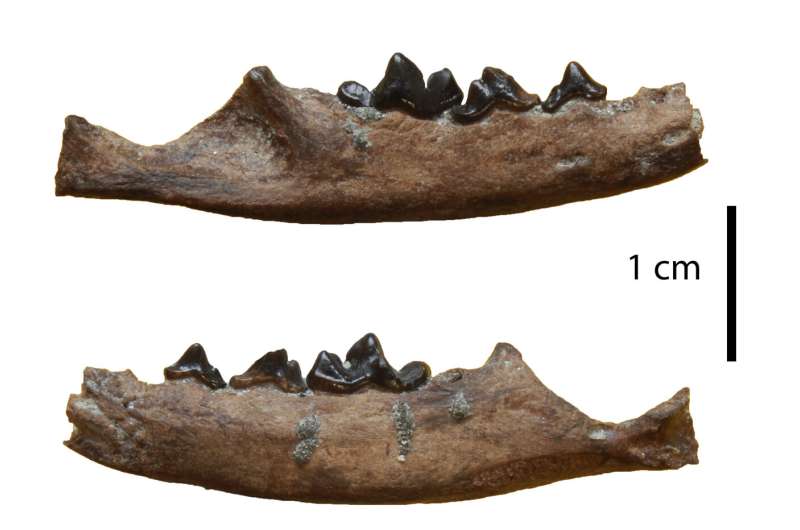An international team of researchers reports that at least 20 species of carnivorous mammals lived 11.5 million years ago in what is now the Hammerschmiede fossil site in southern Germany. The site has been a focus of attention since the 2019 discovery of the first known ape to walk upright, Danuvius guggenmosi. The current Hammerschmiede team includes Nikolaos Kargopoulos and other colleagues from the University of Tübingen, researchers from Zaragoza and Barcelona, and Professor Madelaine Böhme from the Senckenberg Center for Human Evolution and Palaeoenvironment at the University of Tübingen. Their study has been published in the journal PLOS ONE.
The recent excavations, led by Professor Madelaine Böhme, have uncovered an extraordinary diversity of fossil animals and plants, including more than 350 individual finds of mammalian carnivores. Many of them were semi-aquatic, living and hunting on land and in the water, or they spent much of their time in trees. “The species were adapted to the river surrounded by forest that was present in the region at the time,” Böhme says.
Various ecological niches
Among these animals (belonging to the order “Carnivora”) recorded at the site are four marten-like species, two relatives of today’s wolverine, four species of otter, three species of skunk, two species from the red panda family, three different genets, and several species from groups of which there are no living representatives today. For the doctoral researcher Nikolaos Kargopoulos, the first author of the study, a very well-preserved skull of a marten (“Martes” sansaniensis) is one of the most impressive specimens. “This one will definitely help [with] establishing [a] new genus of large extinct marten,” he says.

Lower jaw of the new weasel species, Circamustela hartmanni, which ate only meat. © Nikolaos Kargopoulos
The researchers also discovered a previously unknown species of weasel—one of the smallest predators from the site, estimated to have weighed just 1–3 kilograms. Special adaptations in the teeth reveal that this species fed exclusively on meat. The researchers named it Circamustela hartmanni, in honor of the Hartmann family, on whose property the Hammerschmiede site is located and who have provided access to it for all these years.
According to Madelaine Böhme, wolverines, skunks and even red pandas are to be expected in Europe’s fossil record of 11.5 million years ago, but not in such high concentration and variability of species.
“Such an exceptionally large diversity of small carnivorans, with 20 species at the same site, suggests that the ecosystem at the time was thriving and could support all these different forms,” she says. “Based on an analysis of body mass, feeding and the manner in which they moved around, each of the species discovered appears to have assumed a different role in the ecosystem. They used different natural resources and were thus able to avoid competition,” according to Kargopoulos.
More information:
Nikolaos Kargopoulos et al, The exceptionally high diversity of small carnivorans from the Late Miocene hominid locality of Hammerschmiede (Bavaria, Germany), PLOS ONE (2022). DOI: 10.1371/journal.pone.0268968
Provided by
Eberhard Karls Universität Tübingen
Citation:
Martens, wolverines, skunks and red pandas—Germany was once a paradise for small carnivorans (2022, July 13)


